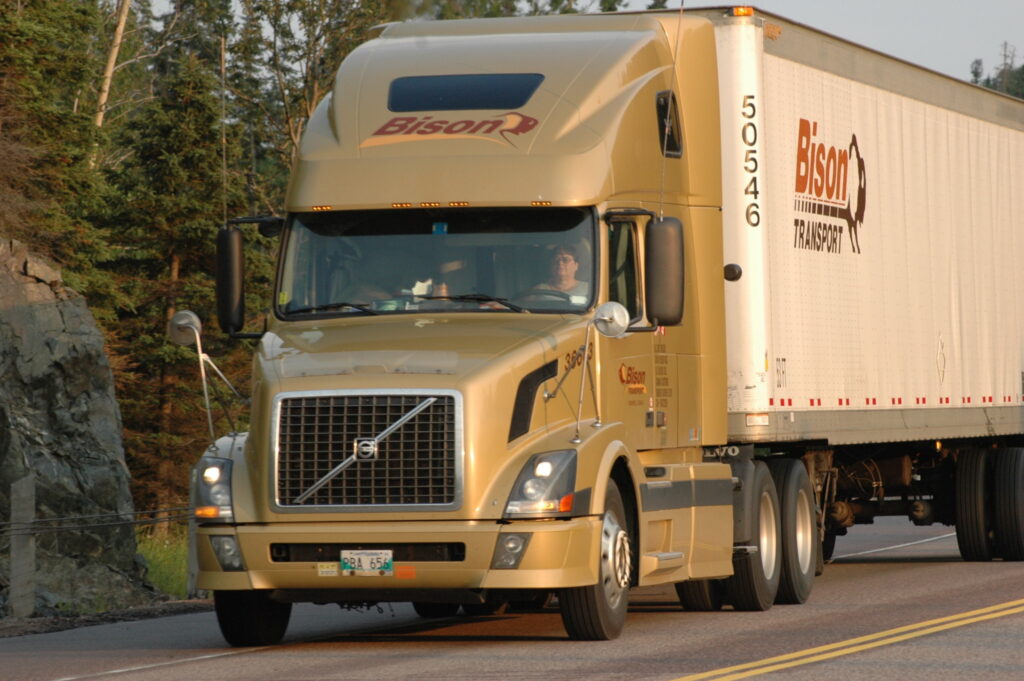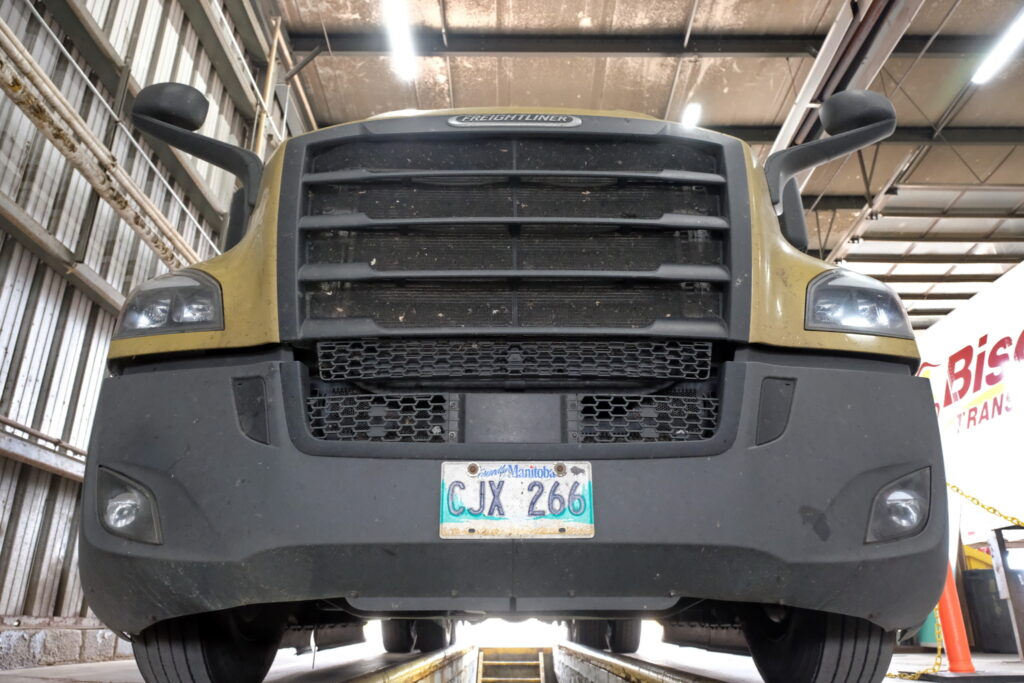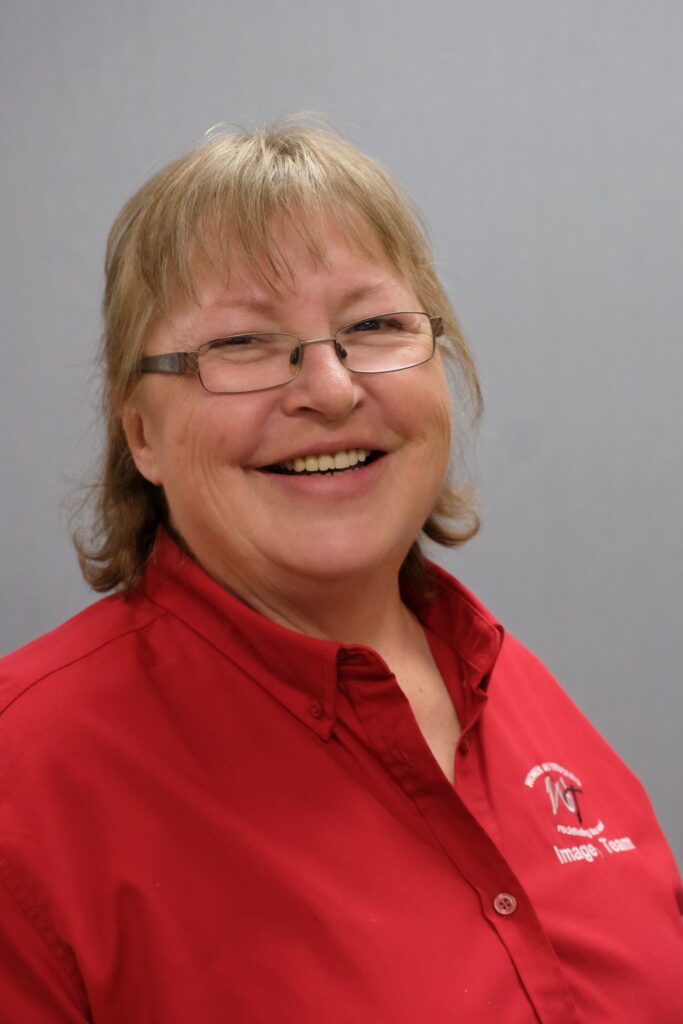Bison’s stellar safety record is no accident
Every driver has at least one story about a drive they’ll never forget. And veteran Bison Transport driver Treana Moniz is no exception.
“This was years ago, long before I came to Bison,” Moniz says. “I was running south on Highway 11 out of Nipigon, hauling for a big overnight carrier. It was the dead of winter, and nobody should have been driving that road.”
Anyone who’s driven that Ontario stretch probably knows what Moniz is talking about. Blowing snow. Freezing rain. Slick roads. Near-zero visibility.
“I called my dispatcher and said, ‘Look, the roads are really bad,’” Moniz recalls. “But it didn’t matter. The load had to be in Etobicoke the next morning. And that was the end of it.”

This is a situation Bison Transport’s director of safety and driver development Garth Pitzel would probably call “compliant.” The road was open. The driver still had hours left to log. On paper, there was no good reason to pull Treana off the road.
But, as Pitzel points out, “Just because you’re compliant doesn’t mean you’re safe.” And this insight is the secret behind Winnipeg-based Bison’s enviable reputation as one of the safest fleets in North America.
Past safety record “hit and miss”
Twenty-three years ago, Bison’s safety policy was simple: train drivers to comply with existing safety regulations. It should have worked. But it didn’t. The company was struggling with an inconsistent safety record. Drivers were leaving, frustrated with the compliance-based training. The carrier’s insurance partner was raising eyebrows. Worst of all, people were getting hurt.
Fast forward to 2023, and Bison has just taken home its 13th consecutive Truckload Carriers Association Grand Prize Fleet Safety Award. In fact, they’ve won this award 16 times in total. And, far from drivers leaving in response to the company’s safety policy, new drivers are knocking at Bison’s door because of it.
What happened? Bison shifted its entire organizational philosophy to safety.
At its most basic level, this meant a driver’s primary responsibility was no longer simply to deliver the customer’s freight on time. Overriding this was a new and higher responsibility – one with which every person in the organization was charged: Make sure every driver arrives home safely after every trip.
Pitzel sees this as more of an attitude shift than anything else. “I mean, we can talk about protecting our assets, which most people would think are the truck, the trailer, and the customer’s freight,” he says. “Or we can talk about protecting our people. Because when that driver makes it home safe, guess what? So does the tractor, the trailer, and the customer’s freight.”
A cynic might still dismiss this as another bunch of management-school mumbo-jumbo. How did Bison actually make it happen?
According to Pitzel, the fleet started at ground zero, which involved designing the best safety toolbox a professional driver could have. And this toolbox includes three major components: the best and safest equipment, the best training and skills-development program, and – perhaps most transformative – the best safety policy in the business.

1: The best and safest equipment
Let’s start with equipment. Bison tractors are equipped with proactive safety technology. This includes following-distance sensors that help drivers maintain a safe distance between their truck and the vehicle in front of them. It also includes side sensors to detect vehicles in a driver’s right-side blind spot, and lane-departure warning systems that warn drivers if they drift out of their driving lane. The trucks are also equipped with a system that monitors drivers’ eyes for fatigue or distracted driving, and delivers both audible and haptic warnings if either occurs.
Could some drivers find all this intrusive? I asked Moniz, who was driving white-knuckled down Highway 11 before she switched carriers and started working for Bison. She says, yes, some of the older drivers might bellyache, but most come around. “Some might say ‘I don’t need the truck driving me’. But that’s not it. You’re still driving the truck. You’re just learning to work with all this new equipment.”
2: Training and Skills-Development
Which brings us to the second pillar of Bison’s safety strategy: training and skills-development. Pitzel is careful to emphasize the skills-development piece because it’s not just “one-and-done” training. He says ongoing personalized assessments, coaching, and follow-up are the real key to the program’s success.
New drivers start with what Bison calls its Driver Finishing School, which comprises an average of 10 weeks with an in-cab instructor. This training is necessary, since more than half of new hires do not meet Bison’s hiring criteria. That said, this training is tailored to each driver’s existing skills and experience. Am experienced driver might complete it in less than the 10 weeks, while a less-confident driver might take up to 14.
After this, drivers complete regular ongoing training. A good example is Bison’s Adverse Conditions course. When this course was introduced two years ago, Bison saw an immediate 48% drop in loss-of-control accidents the following winter. Which is a pretty impressive return on investment for a new training module. The company has since instituted a policy that every driver re-take Adverse Conditions each fall.
“Safety isn’t just the safety department living and breathing it every day. It’s our maintenance, operations, and even our payroll department focusing on making sure our drivers get home safe.”
– Garth Pitzel
Drivers are also assessed on their performance and offered individual coaching to correct unsafe behaviors. For example, if the distance sensors detect a driver regularly following too closely, that feedback will trigger a conversation with an instructor. If a driver too often drops trailers subsequently found to be out of service, that driver will be asked to complete a vehicle-inspection refresher course with one of Bison’s yard trainers.
The program doesn’t deliver only bad news. “One of our safety counselors came to me one day, saying, ‘Feels like I’m just giving out bad news all the time,’” Pitzel says. “And then I went home and thought about it, and realized we were only doing half the job. We needed to be reinforcing good behaviors, too.” After that, the safety counselors started calling drivers who’d made noticeable improvements, and saying ‘Hey, keep up the good work.’
This shift made a real difference in driver morale. Pitzel ran into a driver one day who’d been struggling with the lowered following distances. Pitzel knew this driver’s stats, and that he’d improved even though he was still being called into the office for coaching.
“Instead of berating him further – which I think is what he expected – I congratulated him on his improvement and thanked him for working through it. He was astonished. But in that moment, we changed his attitude from ‘Omg I’m trying but it’s not working,’ to ‘I’m on the right track, I just have to keep working on it.’”
3: A Transformative Policy – the Right to Decide
The final piece of Bison’s safety toolbox is perhaps its most radical: the Right to Decide (RTD) policy. Put simply, it gives every employee the responsibility and the authority to discontinue any task if they feel it’s unsafe to proceed.
“Safety isn’t just the safety department living and breathing it every day. It’s our maintenance, operations, and even our payroll department focusing on making sure our drivers get home safe,” Pitzel explains.
He also emphasizes that RTD is not just about weather. “It’s about so much more. It’s about the condition of the equipment, the roads, and yes, the weather. But most importantly it’s about the condition of the driver. Only the driver can make the call on whether he or she is safe to be on the road. If they need to remove themselves for any reason, they have the right to do so.”
And so it is that Moniz tells quite a different story about another drive she’ll never forget. “I was coming across the Mackinaw Bridge in upstate Michigan when some kind of wind and rain storm hit. It went on all day, getting worse by the hour. By the time I got into Ohio the wind was so bad I could scarcely hold onto the wheel.” Moniz decided to use the RTD policy to take herself off the road. Later, she found dozens of tornadoes had touched down all around her.
“That’s the beauty of the right to decide,” she says. “I know that every single person in the company, right up to the president, is behind me when I make that choice to pull over. The load is not the most important thing to Bison. The drivers are.”
Is the annual $4 million expense worth it?
While there’s certainly no one-size-fits-all solution to safety in the trucking sector, Bison’s strategy seems to be working. Mind you, it’s not cheap. The company spends upwards of $4M on driver development every year.
But when you look at the results – ongoing safety awards, impressive driver retention numbers, happy customers, and an entire company taking pride in its work and believing in its mission – well, it’s tough to argue with that.
Some overpaid advertising exec might even call it “priceless.”

Have your say
This is a moderated forum. Comments will no longer be published unless they are accompanied by a first and last name and a verifiable email address. (Today's Trucking will not publish or share the email address.) Profane language and content deemed to be libelous, racist, or threatening in nature will not be published under any circumstances.